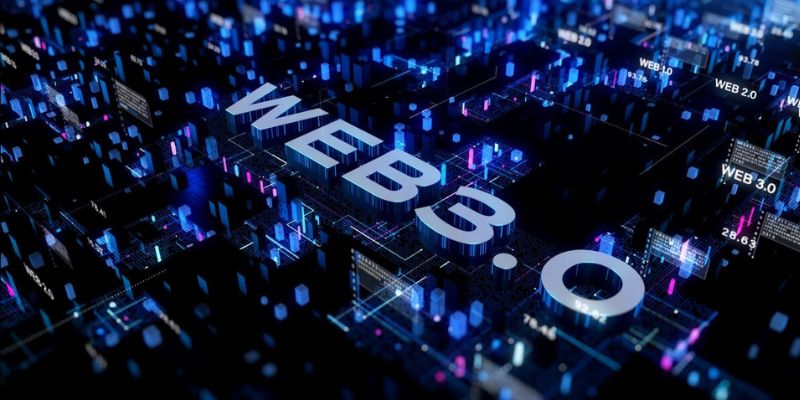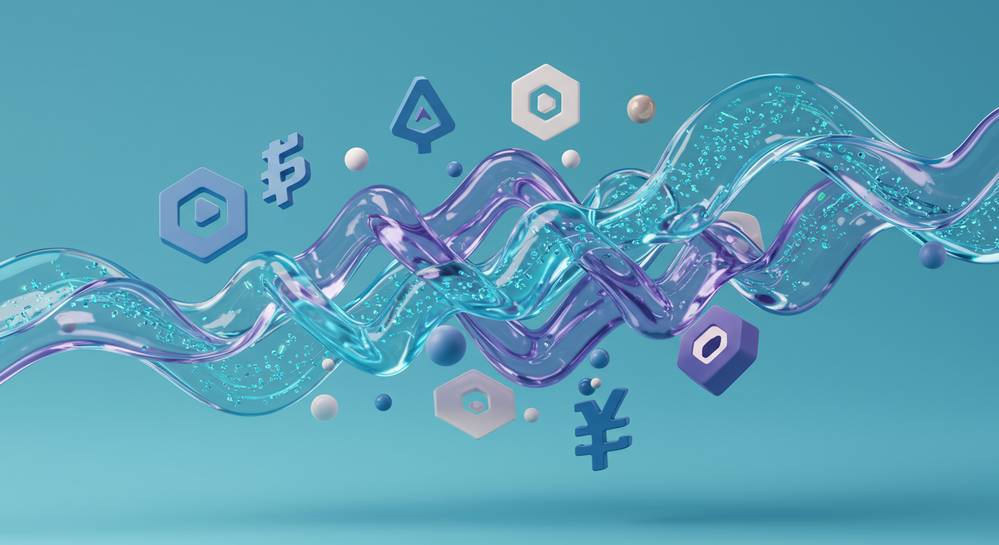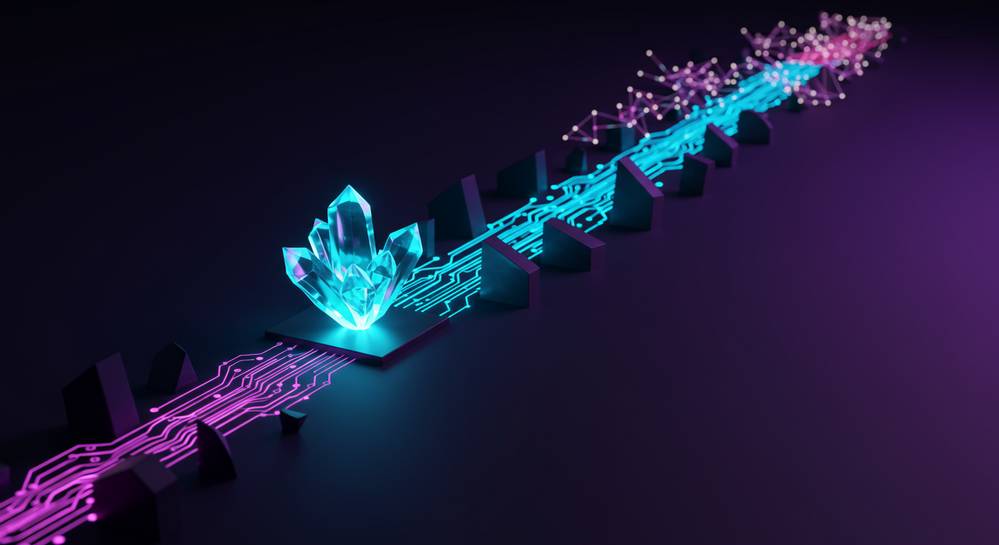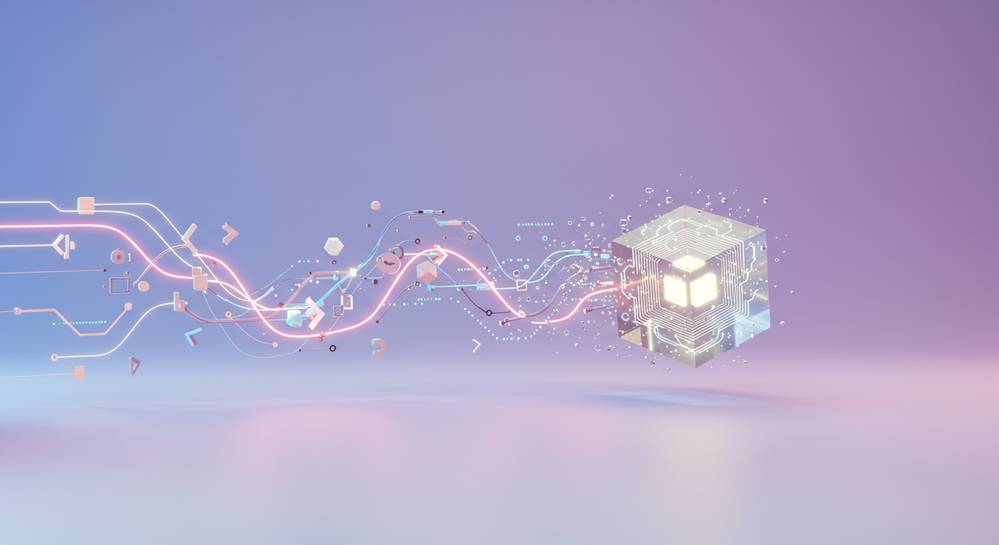Prepare to dive into how the Potential impact of Web3 on the internet could rewrite the rules we play by online. Imagine a world with more control right in our hands, where every click, post, and share lives free from central powers. This isn’t just some tech fantasy—it’s the promise of Web3. As we peel back the layers of this new web frontier, I’ll guide you through the shifts and shakes set to disrupt our digital routine. Want a peek at how tomorrow’s net might look? You’re in the right place. Let’s unravel the Web3 riddle together and see what the next-gen internet has in store for us.
The Decentralized Web: A Leap Forward
The Shifting Paradigm of Online Interaction
The web is changing fast. We are moving from a web controlled by a few big names to a world where everyone can have a stake. This is what we call Web3. It’s a brand new version of the internet. Thanks to blockchain, we can make sure everything is fair and open.
Blockchain is like a magic book. Everyone can see what’s written on it, but no one can erase it. That’s where trust comes from. Just think about it. You know that game you play online? Now you could really own part of it. Or what about talking to friends across the world? Soon, you can do that without giving away all your secrets.
Here’s a simple fact: Web3 means power to the people. You control your data. Not anyone else. It’s a big deal when you think about how much data you create every day. Web3 lets you be the boss of it.
Advantages and Challenges of Decentralized Networks
Let’s get real about the pros and cons of Web3. For starters, decentralized means no central point can fail and bring everything down. It’s like a spider web. If one strand breaks, the web still holds up. This is huge for staying safe online.
But, it’s not all smooth sailing. One of the big hurdles? It’s making sure Web3 can handle lots of users without slowing down. You know how annoying it is when videos buffer? We don’t want that in Web3.
Another challenge is making sure everyone can understand how to use Web3. Not everyone is a tech wizard. We need to make Web3 easy for everyone to get on board.
The good stuff about Web3 is awesome. You get to keep more of what you earn online. Say you create art or write stories. Web3 lets you sell it without giving a big cut to someone else. And you know those passwords you forget? In Web3, your identity is safe without needing a million passwords.
So, are you ready for a ride into the future? Web3’s got a seat with your name on it. Just remember, with big changes come big challenges. And we’re going to tackle them, one by one, together.

Blockchain Technology: The Bedrock of Web3
Enhancing Data Security and User Sovereignty
Blockchain changes how we guard our info online. It forms the core of Web3, giving us stronger hold over personal data. You might ask, “What makes blockchain secure?” Well, it’s like a digital ledger that’s really hard to mess with because info is spread out across many computers. This means no single person has full control. So, hackers can’t just crash the party and swipe your data.
Using blockchain, Web3 lets us control who gets our info. We can even make money off our own data! This tech levels up privacy and gives power back to us, the users. When we talk about advanced privacy, we’re saying goodbye to folks tracking us without permission. We decide who sees our likes, our shop habits, and our online steps.
Smart Contracts and dApp Development
Guess what? Contracts get smarter with Web3. Smart contracts are like promises in code form on the blockchain. They make sure deals go as planned without a middleman. When you meet the deal’s terms, smart contracts self-execute. They cut out delays, extra costs, and mistakes.
Now onto dApps, which stands for decentralized apps. They’re like the apps you use today but run by the public, not just one company. Every user gets a say. These apps have already started to reshape our digital world. “What’s the impact of dApps on users?” you may wonder. People gain more from these apps because they’re not just consumers; they’re part-owners and decision-makers. This evens the field so big companies can’t call all the shots.
With dApps, you could vote on features or changes and earn tokens for helping out. This is what folk mean by ‘decentralized web benefits.’ Imagine having a piece of your favorite app. Cool, right?
Blockchain, smart contracts, and dApps together are pushing us to a world where you control your slice of the internet. This isn’t a small change. It’s a massive shift, like when we first moved from landlines to smartphones. It’ll flip how we see and use the web on its head.
We’re stepping into a space where Web3 and internet evolution will mean doing what we do online but with more freedom, less risk, and a say in wins we never had before. To sum it up, the move to Web3 is like going from riding a bike with training wheels to racing in a sleek, custom ride that you helped build. Watch this lane, because it’s going to be a thrilling ride!
Blockchain tech is not just a behind-the-scenes actor; it’s leading the charge, breaking old rules, and turning the internet into a place we not only visit but actually live in and own a piece of. Now that’s what I call a revolution!

The Economic Impact of Web3
Fostering Decentralized Finance and Cryptocurrency Use
Web3 lets us change how we deal with money. It’s like a new playground for finance! We call this playground decentralized finance, or DeFi for short. DeFi uses blockchain to let people handle money without banks. It’s a big deal because you can save, borrow, trade, and earn interest directly with others. No middlemen!
Blockchain is a trusty digital ledger that keeps a clear record of transactions. With its help, cryptocurrencies are part of Web3. People worldwide can use them for paying, earning, and investing. This new money can go across borders fast, without extra fees.
NFTs Transforming Ownership and Creativity
Now, let’s talk about a hot topic: NFTs, or non-fungible tokens. They’re like special, one-of-a-kind trading cards but digital. NFTs are changing how we own things online. When artists make digital art, NFTs help them sell it directly to fans. And guess what? They can even keep earning when their art is resold!
Web3 and NFTs help make sure artists and creators get their fair share. This backs up their work and encourages cool, new creations. Buying an NFT often gives you a piece of ownership in a digital world. It’s like having a signed original, not just a copy.
In short, Web3’s all about giving people more power over their money and work. It’s shaking up the internet big time! With smart contracts, you can trust that deals will happen as planned, with no sneaky business. Using dApps, or decentralized apps, protects our privacy more. Also, this growth of cryptocurrency and NFTs is just the start of Web3’s economic impact. It’s a glimpse of an amazing future where we take back control online.

Web3 Governance and User Experience
Crafting Democratic Governance Models
Right now, Web3 is setting the internet on fire. It’s all thanks to blockchain. This tech lets everyone have a say, not just the big shots. Think of a game where the rules are clear. Everyone plays fair. That’s blockchain, making sure everyone can trust the system.
But how does it work? Let’s dive in. Blockchain keeps a list of all transactions. It’s like a ledger that no one person controls. And the cool part? Everyone gets to check the records. It’s open for all. When we talk about Web3 governance, we knock down power from just a few. It’s a vote from the crowd that guides us.
Web tech changes fast. Users need to keep up, right? With blockchain, they can. Users voice their choices through tokens. These tokens carry power. Consider them as your voice in a huge online world. The more you have, the louder you speak. Web3 lets you earn these just by using the net. Now that’s fair!
Yet, can it handle all users? Scalability is key. Imagine a bridge that grows as more cars drive on it. That’s what Web3 needs. And experts are on it, working to let everyone on without a hitch.
That’s not all. With smart contracts, rules are code. No one can break them. If you agree to a deal, smart contracts hold you to it. Like a robot referee in a game. You play fair, or you’re out. These handy contracts make apps on Web3 work like magic. They do everything they promise, without a person stepping in.
Innovating the Browsing and Digital Identity Experience
Now, think of how you roam the Web. A click here, a search there. Web3 changes this dance. It offers a browsing redo with you in charge. Your data, your rules.
When you visit sites, your digital ID matters. It’s you, but online. In Web3, you keep your ID close. It sticks with you across the net. This way, you choose who knows you online. And guess what? This ID holds your online cash, too. That’s your cryptocurrencies. They open doors in Web3.
Using this, buying and selling is simple. It’s direct, from person to person. No middle man to pocket extra change. And this is where tokens shine again. They’re not just for voting. They’re like collectible coins you can spend.
We’re seeing a shift in making money online. Content creators get direct pay in Web3. They gather fans, drop cool stuff, and earn tokens. It’s a big move from old-school likes and shares.
Think of NFTs. They’re like special online stickers that say, “This is mine.” If you make art or music, NFTs let you sell and still own your work. That’s turning the art world upside down. Now creators stay in control.
Web3 links stuff too. Like your fridge ordering milk when you run out. That’s the web and your home talking. They call it the Internet of Things (IoT). Blockchain helps here as well. It makes sure those chats are safe from eavesdroppers.
In all, Web3 is a playground of new ideas. It gives us a net that’s ours. We keep our stuff safe, make the rules, and build a web that grows with us. It’s a place where anyone can be a boss, create with no limits, and surf a safer, fairer internet.
So, ready to ride the Web3 wave? It’s a big leap for all of us. Let’s make the internet ours. Not just read and watch but also steer where it goes. That’s the Web3 revolution!
We’ve explored how the decentralized web marks a big step in how we connect online. We talked about how it changes our online world, makes our data safer, and gives us more control. We also saw how it can shake up money matters, letting people use digital money and own unique digital stuff with NFTs.
But it’s not all smooth sailing. We face hurdles in making sure these networks are easy for everyone to use and in agreeing on how we make decisions together as a community.
I believe, though, that Web3 can lead us to a place where we all have a say and can trust the safety of our online spaces. We’re on the brink of something huge—a fresh way to browse, share, and own our piece of the internet puzzle. Let’s embrace it and shape it to be the best it can be for everyone.
Q&A :
How might Web3 redefine user experiences on the internet?
Web3 promises to usher in a more decentralized and user-centric internet experience. By leveraging blockchain technology, users could potentially gain more control over their data, enabling more personalized and secure interactions online. As peer-to-peer transactions become more common, we may see a reduction in reliance on intermediaries, potentially revolutionizing how we interact with social media, e-commerce, and content creation platforms.
What are the possible economic impacts of Web3 implementation?
The implementation of Web3 could have significant economic implications, from the disruption of traditional business models to the emergence of new markets. The tokenization of assets and the use of cryptocurrencies could facilitate a more inclusive and accessible financial system. Moreover, smart contract technology might streamline business operations and reduce costs, driving innovation and potentially leading to the growth of a more equitable digital economy.
Can Web3 improve internet privacy and security concerns?
By design, Web3 technologies could offer enhanced privacy and security features. Through its decentralized architecture, it minimizes centralized points of failure that could be exploited by hackers. Encryption and the use of decentralized identifiers (DIDs) mean personal information isn’t stored in central repositories, potentially giving users greater control over their personal data and reducing the prevalence of large-scale data breaches.
Will Web3 require entirely new internet infrastructure?
While Web3 will build upon the existing internet infrastructure, it introduces new layers of technology, such as blockchain and peer-to-peer networks, that could complement or replace some of the current systems. This evolution could lead to the development of new protocols, services, and infrastructure components designed to support a decentralized web where users take an active role in maintaining and operating network services.
How might content creation and ownership change with Web3?
Web3 could significantly shift content creation, distribution, and ownership. Creators could use non-fungible tokens (NFTs) and similar digital assets to retain ownership rights and earn revenue directly from consumers. This direct creator-consumer relationship, facilitated by blockchain, might challenge traditional content distribution networks and platforms by offering creators more autonomy and reducing dependency on intermediaries.



